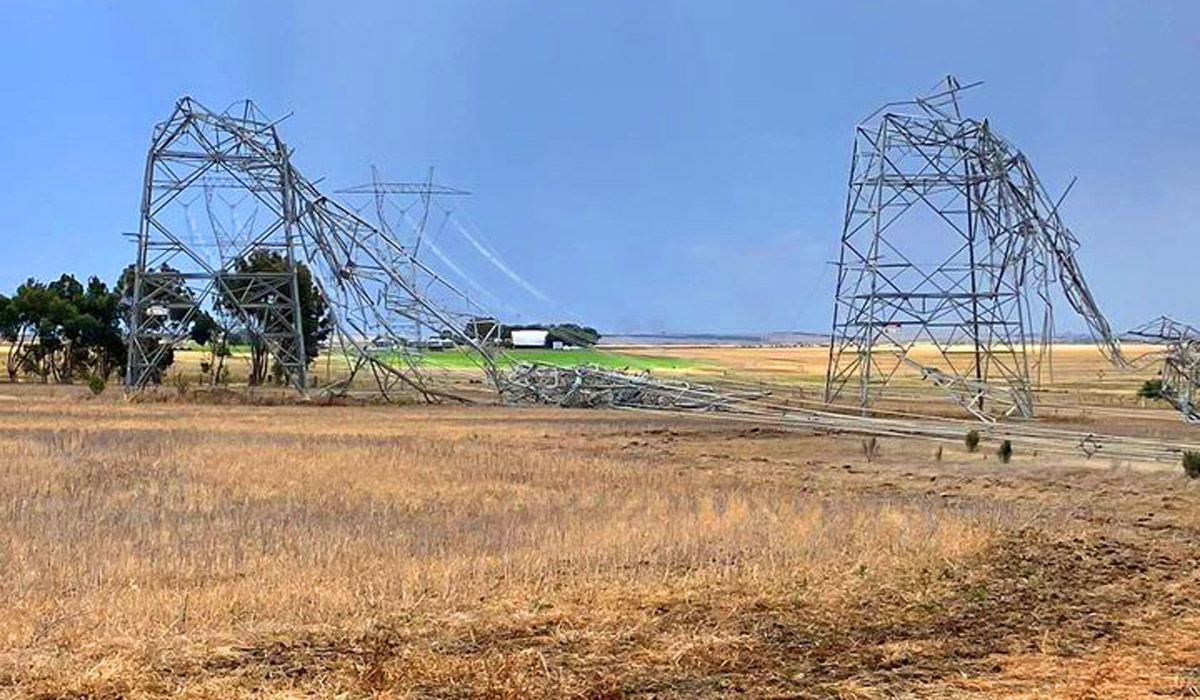A crumbling grid: Why we need urgent resilience planning

Another 530,000 Victorian household and businesses plunged into darkness
From Anakie to Kalgoorlie, recent events paint a stark picture: our transmission towers, the backbone of our power grid, are increasingly vulnerable to extreme weather, bushfire, vandalism, and even sabotage. These incidents, along with countless near misses, serve as a chilling reminder of the fragility of our power infrastructure and the potential consequences of inaction. This is not the time for complacency; it's a call to action. We need urgent resilience planning to fortify our power grid and ensure the lights stay on in the face of mounting threats.
Building a Resilient Electricity Grid for Victoria
The recent blackout triggered by six collapsing transmission towers paints a chilling picture: our power grid, the backbone of our daily lives, is increasingly vulnerable. Beyond inconvenience, these outages represent a significant economic and social burden. This calls for urgent action to fortify our grid and ensure the lights stay on, even in the face of mounting threats.
Cost vs. Resilience: A False Dichotomy
While cost is understandably a key consideration, AEMO's insistence on overhead lines overlooks the broader picture. Ignoring the downstream costs of outages — lost productivity, healthcare impacts, and disrupted lives — creates a distorted view of "cost-effectiveness."
Plan B: A Path Forward
Plan B offers a compelling alternative, prioritising resilience through:
- Eliminating Single Points of Failure: Avoiding double-circuit 500 kV single tower lines minimises cascading blackouts.
- Leveraging Existing Infrastructure: Strategically utilising the already meshed and resilient 220 kV network.
- Phased Implementation: Allowing flexibility for adaptation and technological advancements.
Undergrounding: A Strategic Investment
While more expensive upfront, undergrounding critical lines in high-risk areas like bushfire zones offers superior protection, potentially saving long-term maintenance costs and outage risks. Combining Plan B's strengths with targeted undergrounding could be particularly effective.
Beyond Cost: A Triple Bottom Line Approach
Decision-making should consider not just cost, but also social and environmental impacts. By adopting a triple bottom line perspective, we can build a grid that is:
- Reliable: Minimising outages and their detrimental effects.
- Sustainable: Minimising environmental impact and adapting to climate change.
- Affordable: Considering the full economic costs, not just upfront investment.
A Call to Action
- Policy Changes: Policymakers must incentivise considering broader economic costs and resilience factors in infrastructure projects.
- Public Engagement: Increased public awareness and engagement can influence decision-making.
- Comprehensive Cost-Benefit Analysis: We need thorough assessments that factor in the full economic impact of outages.
- Hybrid Approach: Consider strategically combining Plan B's strengths with targeted undergrounding.
The Anakie outage is a wake-up call. Let's move beyond a purely cost-driven approach and prioritise long-term resilience. By working together, we can build a grid that withstands the challenges of tomorrow, ensuring a brighter future for Victoria where the lights stay on for generations to come.
Engage with the issue, advocate for resilience, and together, let's build a secure future for our communities.
To dive deeper into these issues, download two additional resources: 'Transmission Tower Incidents,' which analyses recent events and their impact, and 'Investing in a Resilient Grid,' which explores potential solutions and outlines the proposal sent to the Victorian government.
Image by Simon Munro

